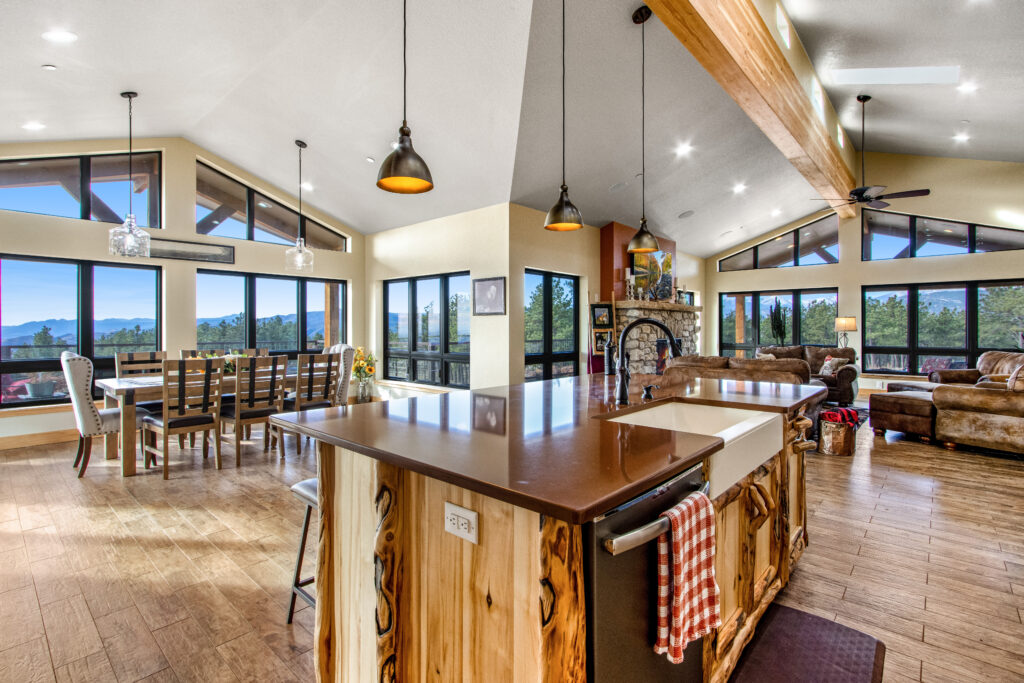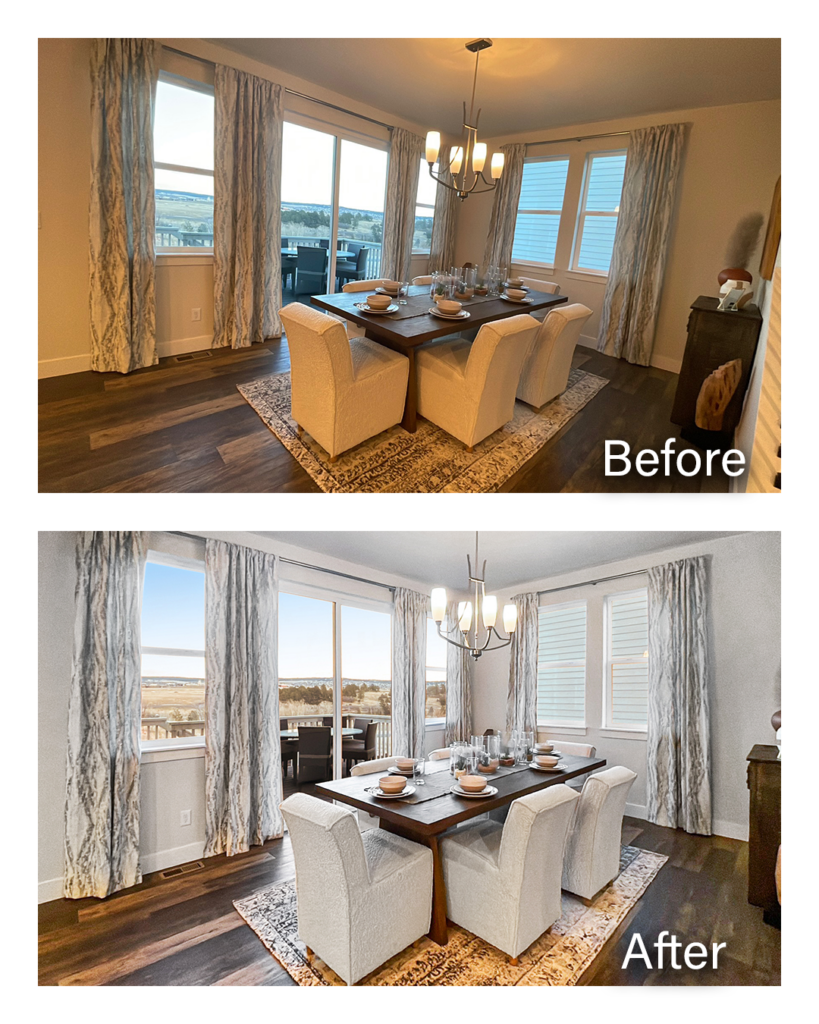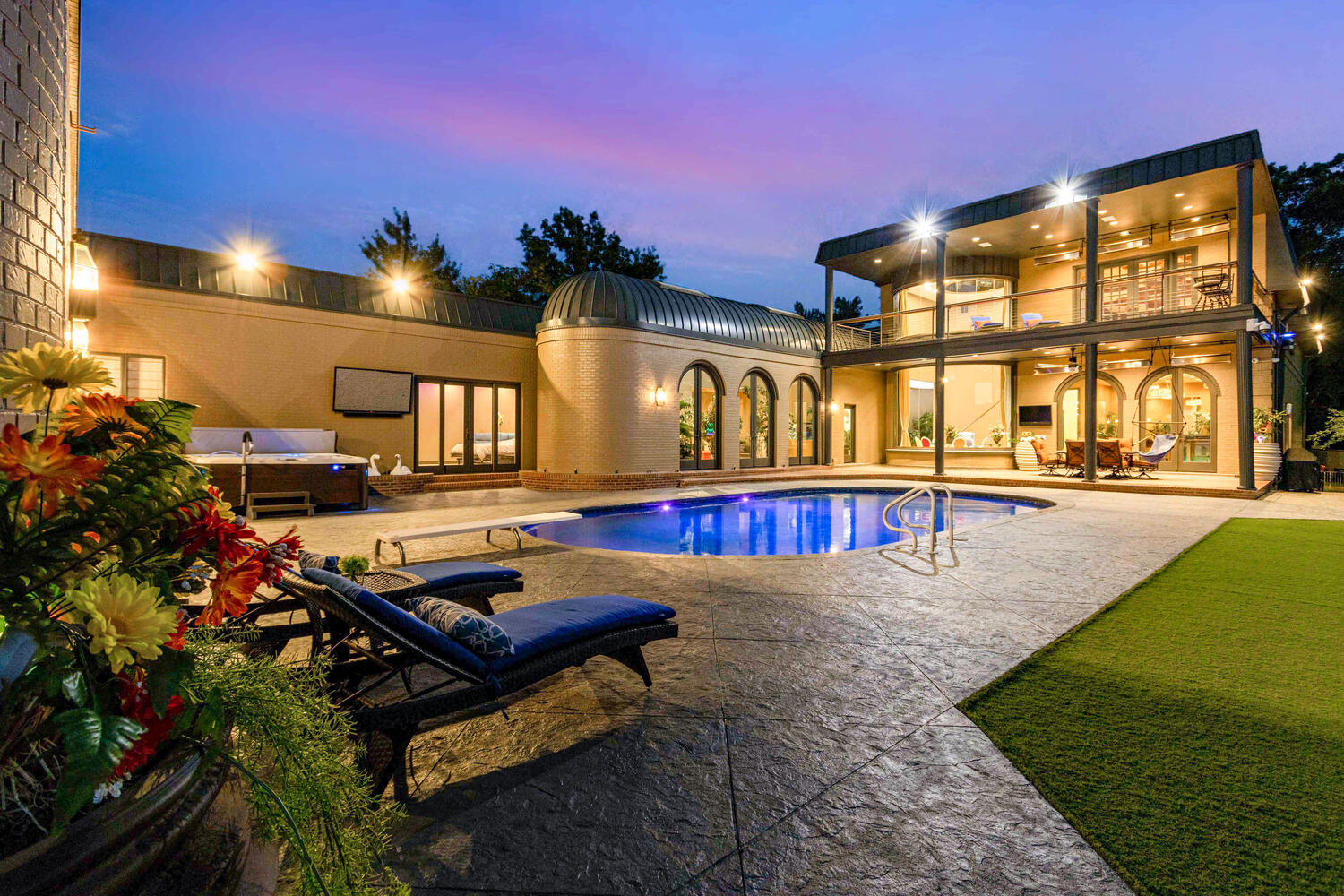As a professional real estate photographer for the past 16 years, I often get questions from real estate agents about the best camera to use for real estate photography. The old adage of the best camera being the one you have with you might work for catching spontaneous photos, but for the REALTOR, homeowner, or short term rental manager, image quality is paramount as you seek to attract potential buyers or renters for your listings. When a potential client is either searching for a property or searching for a real estate agent to represent them, high quality real estate photos serve as a subconscious visual representation of the quality of service you will provide to them! Of course, hiring an experienced professional photographer can save you time, but if you’re looking to save money or enjoy capturing your own real estate images, then this article will help identify the right camera for you.
For many years since film cameras have all but disappeared, DSLR cameras with wide-angle lenses have been one of the best ways to capture interior shots and exterior shots of homes. DSLR, or digital single-lens reflex cameras use a mirror that reflects light to a viewfinder so the photographer can see the entire room or scene they are about to capture. When the shutter button is depressed, the mirror drops out of the way and the light hits the digital image sensor. In a full-frame sensor DLSR camera, the sensor itself is large, replicating an old 35mm film camera. A crop sensor, also known as an APS-C sensor, is simply a smaller sensor that cuts off edges of a photo for a tighter view (coupled with crop sensor lenses), resulting in a more affordable but slightly lower quality and detail than a full-frame camera. The Nikon D series cameras and Canon D Mark IV cameras are among the most popular full-frame cameras. These are an excellent choice for high resolution, high-quality photos, but they are very expensive, especially when coupled with a quality wide-angle lens.
In 2004, Epson – yes, the printer manufacturer, introduced the first mirrorless camera. Since then mirrorless cameras have been gaining and surpassing DSLRs in popularity. Different than a point-and-shoot digital camera, mirrorless cameras still allow for changing lenses like DSLR cameras, but eliminate the mirror and optical viewfinder in favor of a digital viewfinder that displays the live image on an LCD screen. Some examples of the best quality mirrorless cameras include the Nikon Z series, Canon EOS R and Sony A series cameras.
I have to take a moment to address the rise of the cell phone camera. It’s no secret that despite their smaller sensor size and up-until-recently poor low-light performance, the mobile device has come a long way. Can a cell phone shoot good real estate photography? The short answer is yes and no. The newest generation cell phones, such as the iPhone 12 Pro and later, the Google Pixel 4 Pro and later, and the Samsung S20 series and later have some impressive features and in some cases can actually be contenders for real estate photography. Before we dive into this assertion, let’s take a look at real estate photography: who it’s for and how good it needs to be.

I find it easiest to start at both extremes when discussing real estate photography quality and the target audience. For professional real estate photographers, the client is usually the real estate agent. If you’re reading this article you may be a professional photographer, but odds are that you are a homeowner or a real estate agent. If you are listing your home, do you need the best photography available? If so, then for several thousand dollars you can hire a “name-brand” architectural photographer who might spend the entire day photographing your home with the best camera and best lenses and a truckload of artificial lighting gear. Depending on the market, you’ll list your home and it will sell within 90 days – maybe faster with those dazzling high-quality images for which you just spent thousands of dollars. On the other extreme, you could snap all your shots with an iPhone 6. You’ll likely get less interest and it may take longer to sell. My point here is that while we want good quality photos there is a balance. That balance is up to each person to decide as they make the trade-off between expense, time, and quality. My position is that the answer lies somewhere in the middle for MOST real estate photography. At a minimum the photos should be well composed, properly lit with good white balance and accurate color representation. Window views should be visible and not blown out.
Remember that ultimately, you’re shooting with two goals in mind: To sell or rent the property and to represent your brand. You don’t need the best zoom lenses, camera battery life, or off-camera lighting equipment to produce impressive photos that will accomplish these goals. Shooting in natural light without expensive lighting gear, but with the right techniques will produce great video quality and photo quality that is sure to impress potential clients while providing you with an impressive portfolio to bolster your brand. A prospective client should see enough quality content in your photos to help them fall in love or to at least want to see more of the property in person. Sometimes good photos or a Matterport Pro 3D tour can save you time and effort when a potential buyer learns the layout isn’t for them – saving you a wasted trip or showing.
Now, back to cell phone cameras. The most recent generation of all major players, iPhone, Google, Samsung and others, have added wide angle lenses for that wide field of view that is essential for capturing interior spaces. Additionally, one of the major challenges of interior photography in real estate is the high dynamic range posed by bright windows and dark corners. While a mirrorless or full-frame DSLR camera with a larger sensor has an impressive dynamic range (the range between the brightest and darkest parts of a photo), they have a specific disadvantage over a cell phone. That disadvantage is that a cell phone is a computer that is taking advantage of AI and a very cool method called computational photography to give it a fighting chance against more expensive professional cameras. In a nutshell, a critical element of computational photography is blending multiple images, possibly a dozen or more, and taking the best part of each image to combine it into what you see displayed on your screen. The dark areas are overexposed to brighten them up, while the bright areas use an underexposed image to balance them out.
The last time you looked at real estate listings did you view them on a cell phone screen? Maybe a laptop screen? Perhaps you viewed them on a large monitor, or even had one of them featured on the cover of a local real estate magazine? My guess is that you didn’t enlarge them to wall-size prints or zoom in to analyze graininess or noise from a high ISO setting. If these things are true, then I argue you don’t need the best camera body, the best lens, or the best drone to make your listing stand out. So what do you need?
Photographer Ken Rockwell has an EXCELLENT article in which he argues that it is the skill and training of the photographer, not the equipment that makes for a great photo. He has several examples on his page of photos taken with everything from disposable cameras to old cell phones. I love this quote from his page, “Buying a Bösendorfer doesn’t mean you can play the piano. Buying a great camera doesn’t mean you can create compelling photographs. Good pianists can play on anything and a good photographer can make great images with a disposable camera.”
“But, Tim,” you say. “I thought you were going to recommend the best real estate camera, or a list of the top 15 best cameras for real estate photography!” I will. I promise. But I also don’t want to set you up for disappointment. The last thing I want to do is recommend anything from the Panasonic Lumix FZ for $600 at the time of this writing to the $6,000 Canon EOS R3 only to have you think the camera is going to make your photos amazing if you don’t first know how to take amazing photos.

Before you go and invest hundreds or thousands of dollars on equipment, I recommend learning how to take great real estate photos. There are plenty of resources available online including here at this blog. A shameless plug follows for our DIY Real Estate Photography App for iOS and Android, “You Cell It.” The app is free to download and includes 8 free tutorials on how to take better real estate photos. If you chose to use the full features of the app, you can use it to take photos of your listings using its vertical lines overlay guide. Once you’re done taking photos just hit the upload and pay button and the photos will be sent to our team of professional photo editors who will do all the processing work for you – adding virtual fires to fireplaces, replacing cloudy skies with blue skies, rotating, color correcting and delivering the final images to your inbox the next day. You’ll get results close to professional photography results without the higher prices associated with buying expensive gear or hiring a professional photographer.
If you already have some photography experience, then perhaps a new camera and lens for your listing will be a good idea and a great opportunity to pursue your photography passion! While the ideal choice in camera will be different for everyone, at the end of the day you can take professional photos for your real estate business if you’re willing to invest the time to learn how to use the equipment (and maybe Adobe Photoshop!). This list will help you select the best option for your budget.
Keep in mind that any DSLR or mirrorless cameras listed will still require a wide-angle lens. Depending on the lens you select it could add anywhere from $300 to over $2,000 on top of the cost of the camera you select. The easy way to make this list would be to list the most expensive cameras as the best. In some ways that’s true, but my recommendations are a blend of cost, features relevant to real estate photography and what will help obtain the end result of impressing potential customers with your stunning real estate properties. For example, speed of capture is not nearly as important in the real estate photography business as it is for sports photography. In real estate photography we’re shooting a slow shutter speed and rarely if ever need the camera to be ready for the next shot instantaneously. As another example, often times when shooting twilight exterior photos, I have the camera up high on a tripod in order to get a higher perspective and minimize the driveway in the foreground of the shot. In this case having a viewfinder that tilts down is valuable! With these things in mind, here are the top 15 listed in descending price order:
- Canon R6 for $2,499. Pros: Good for video, mirrorless, C-RAW, articulating LCD. Cons: Expensive.
- Nikon D850 for $2,499. Pros: 45.7 MP sensor for only $300 more than D780. Cons: LCD only tilts, DSLR beginning to phase out, expensive.
- Nikon D780 $2,199. Pros: Overall strong performer, good for video. Cons: LCD only tilts, DLSR beginning to phase out.
- Nikon Z6 $1,999. Pros: Better low-light performance than Z5, full frame video. Cons: LCD only tilts.
- Sony A7 III $1,998. Pros: Compact, good video & image quality. Cons: Not the most user-friendly model, LCD tilt only.
- Canon EOS R $1,499. Pros: Low cost full-frame, mirrorless, C-RAW, articulating LCD. Cons: Poor video, advantages over RP for real estate photography may not be worth price difference (autofocus, 30MP).
- Canon EOS 6D Mark II $1,399. Pros: Great value, good for video, full frame. Cons: DSLR beginning to phase out.
- Canon EOS 90D $1,199. Low cost DSLR, good for video, articulating LCD. Cons: DSLR beginning to phase out, crop sensor.
- Nikon Z5 $1,099. Pros: Low cost full-frame mirrorless, higher resolution than Z-FC. Cons: LCD only tilts, cropped video.
- Canon EOS RP. Pros: $999 Low cost full-frame, mirrorless, C-RAW, articulating LCD. Cons: Poor video, fewer autofocus points.
- iPhone 14 Pro. $999. Pros: Apple has virtually closed the gap with the Google Pixel camera. Cons: As with all cell phones, small sensor size.
- Nikon Z-FC. $959: Pros: Cool retro look, articulating LCD. Autofocus not top-notch, plastic build quality.
- Google Pixel 7 Pro. $899. Pros: The cell phone camera to beat. Cons: Your iPhone friends will mock green messages.
- Samsung Galaxy Ultra 22. $850. Pros: Samsung’s S22 takes the crown for zoom and MP count. Cons: Its strongest point, the zoom lens, isn’t ideal for interior real estate photos.
- Nikon Z30. $709 Pros: The lowest cost full-frame mirrorless camera, compact, articulating LCD. Cons: No viewfinder, no hot shoe.
In summary, any of the cameras above could be a good choice for real estate photography, but it’s more about how you use the equipment than it is about the equipment itself. If you don’t already have camera equipment, consider learning photography techniques through an online course, this blog or the You Cell It DIY Real Estate Photography App. Then, when you’re ready to invest $700-$3,000 on a camera and lens setup, refer to the list above and have some fun learning and improving your photography skills! For more real estate photography tips, be sure to subscribe!
Tim

View comments
+ Leave a comment